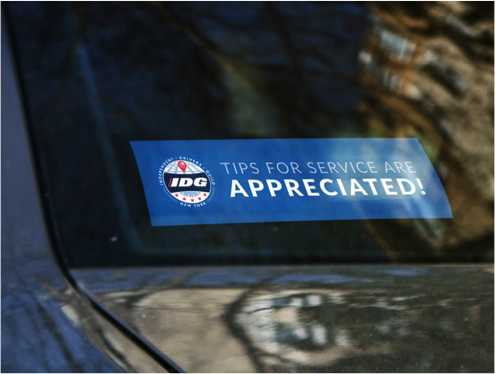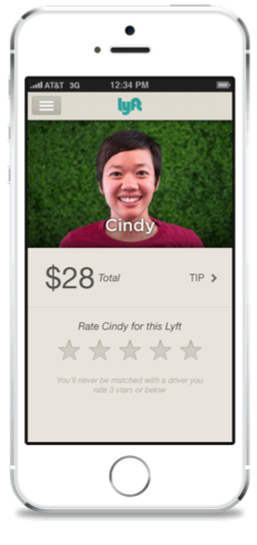April 27, 2017
By the end of the year, Uber customers in New York City will be able to tip their drivers using their smartphone app.
On April 17, the New York City Taxi and Limousine Commission (TLC) acknowledged a petition from the Independent Drivers Guild (IDG), an advocacy group for the city’s 50,000 ride-hail drivers, calling on Uber to allow passengers to tip their drivers in the app when the ride is complete. In response, TLC announced that it would introduce a rule requiring the company to provide an in-app tipping option this year.
The decision follows a yearlong IDG campaign calling on Uber to “make the user experience less confusing for passengers” by adding an option to allow passengers to tip their drivers after each ride.
IDG circulated stickers to raise customer awareness that tips were not included in its fares and its petition has gathered over 11,000 signatures and counting. Once enacted, IDG estimates this policy will yield drivers a total of $300 million per year in tips.
“Drivers have long been denied access to the kinds of benefits and labor protections many workers take for granted, such as paid sick leave or the minimum wage,” said IDG founder Jim Conigliaro, Jr.
“As a result, New York City’s professional drivers have traditionally depended on gratuities for a substantial portion of their income. Cuts to driver pay across the ride-hail industry has made tipping income more important than ever.”
IDG formed last year under an agreement between local drivers, the International Association of Machinists and Aerospace Workers union, and Uber itself. Through this five-year deal, IDG members meet with Uber management once a month to discuss their concerns and appeal Uber’s decisions to suspend or ban drivers.
The guild differs from a traditional union in that its members are independent contractors, not full-time employees. This means that IDG cannot engage in collective bargaining to raise fares or increase benefits. Instead, it must convince Uber to address issues of concern, or compel it to do so by bending the ear of local regulators.
The lack of an in-app tipping option has long been a major point of contention between Uber and its thousands of drivers across the country, as tips are not included in the fares paid to drivers.
IDG’s hefty $300 million projection is based on existing tipping data collected on the city’s yellow cab companies. They found that 97 percent of solo taxi customers who paid with a credit card tipped an average of 20 percent.
With a small slice of the last 20 percent is Lyft, Uber’s primary competitor in the U.S., which has allowed riders to tip their drivers in its app after each ride.
This policy is winning the scrappy upstart more popularity among those behind the wheel and in the passenger seat, amounting to $200 million in tips to drivers. But this may not – and, anecdotal evidence suggests, does not – yield the same tipping rates enjoyed by yellow cab drivers.
And Lyft’s concept of tipping for e-hail trips may still be foreign to many of Uber’s customers in New York City. While it is unclear how many people use both services, Conigliaro noted that Uber comprises a whopping 80% of New York City’s market for ride-hail and black car services.
Ultimately, the issue is not only technological, but also social.
Even if TLC does force Uber to modify its interface so that passengers can tip in the app, the next challenge will be to create a social expectation of tipping – something that is much easier when the passenger is choosing a tip amount while sitting in a taxi than when they’re already out of the car and walking into their office.
Still, Conigliaro does not see this as an issue.
“What we’ve found is that people want to tip. . . and they feel uncomfortable when they don’t.”
The TLC will introduce the rule in July, when it will then be subject to a 90-day public review before being implemented.





